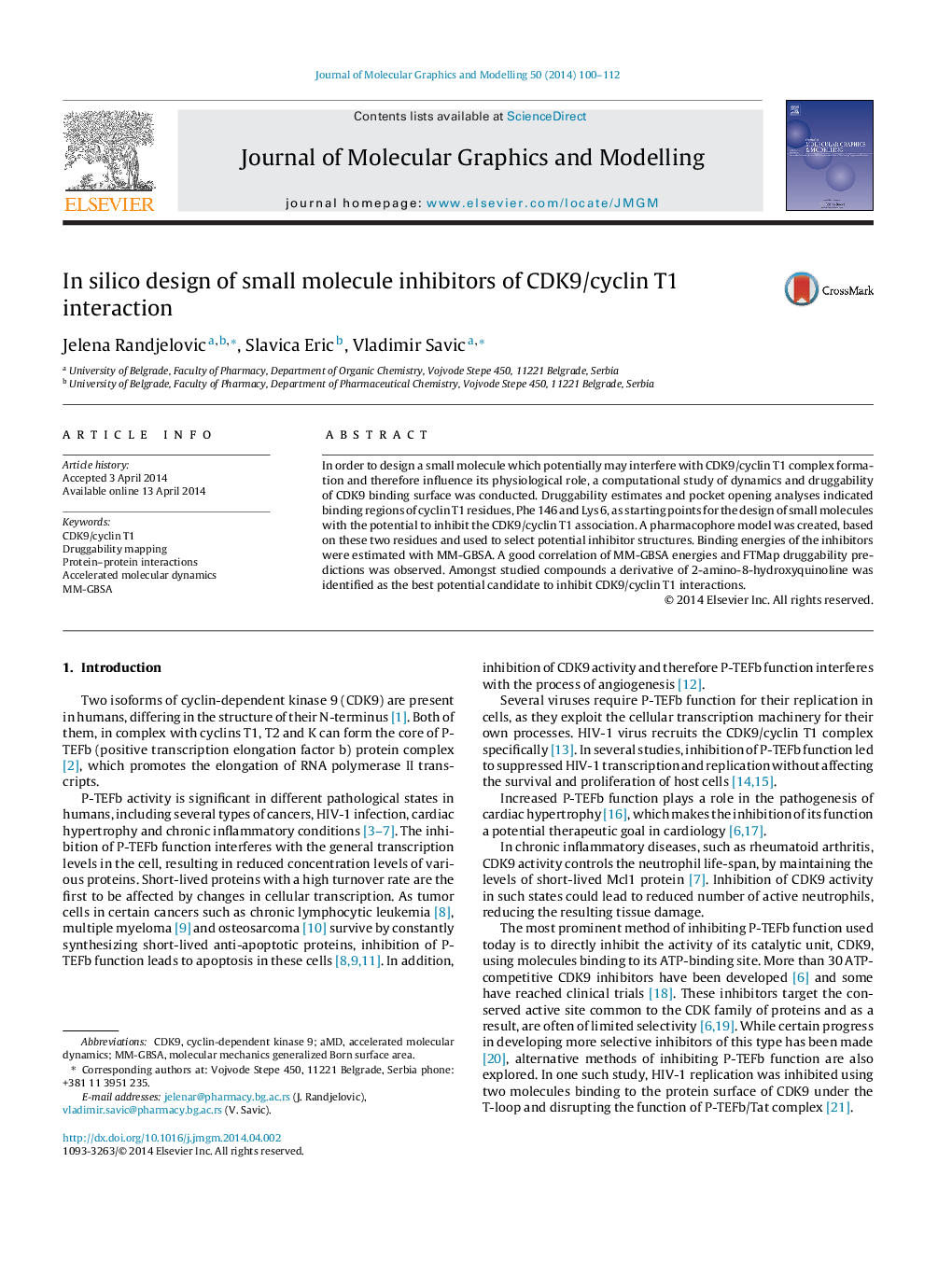| Article ID | Journal | Published Year | Pages | File Type |
|---|---|---|---|---|
| 443348 | Journal of Molecular Graphics and Modelling | 2014 | 13 Pages |
•A study of dynamics and druggability of CDK9 binding surface was performed.•Opening of interface pockets at CDK9 residues Ile 67, Leu 81 and Ile 84 shown.•Cyclin T1 residues, Phe 146 and Lys 6 used as starting points for inhibitor design.•A structure of a quinoline inhibitor of CDK9/cyclin T1 interaction is proposed.
In order to design a small molecule which potentially may interfere with CDK9/cyclin T1 complex formation and therefore influence its physiological role, a computational study of dynamics and druggability of CDK9 binding surface was conducted. Druggability estimates and pocket opening analyses indicated binding regions of cyclin T1 residues, Phe 146 and Lys 6, as starting points for the design of small molecules with the potential to inhibit the CDK9/cyclin T1 association. A pharmacophore model was created, based on these two residues and used to select potential inhibitor structures. Binding energies of the inhibitors were estimated with MM-GBSA. A good correlation of MM-GBSA energies and FTMap druggability predictions was observed. Amongst studied compounds a derivative of 2-amino-8-hydroxyquinoline was identified as the best potential candidate to inhibit CDK9/cyclin T1 interactions.
Graphical abstractFigure optionsDownload full-size imageDownload high-quality image (377 K)Download as PowerPoint slide
